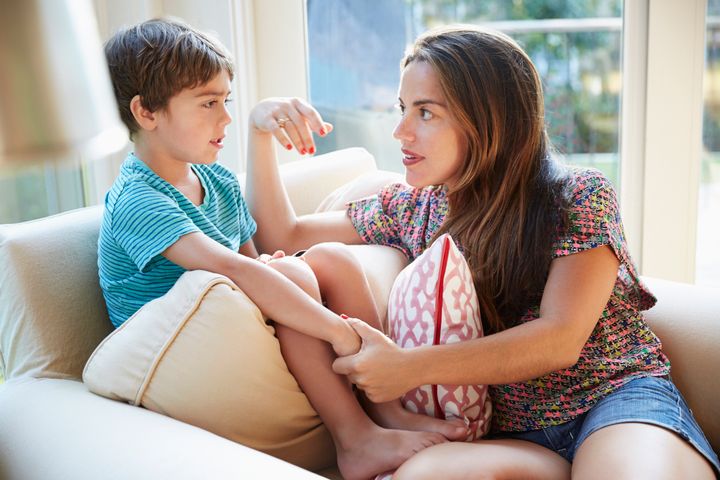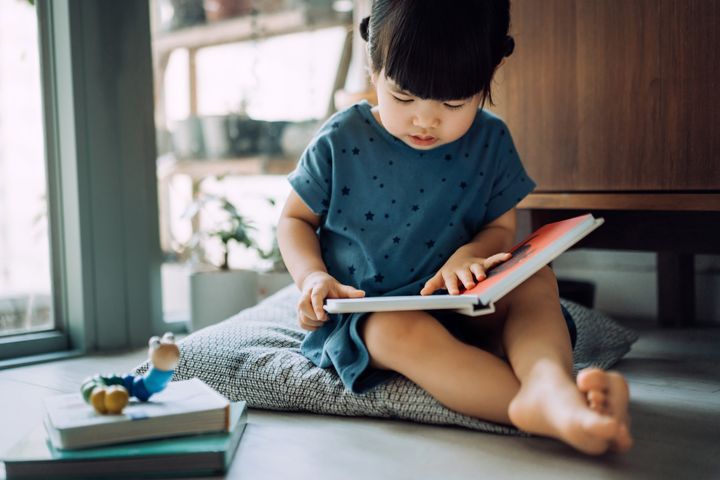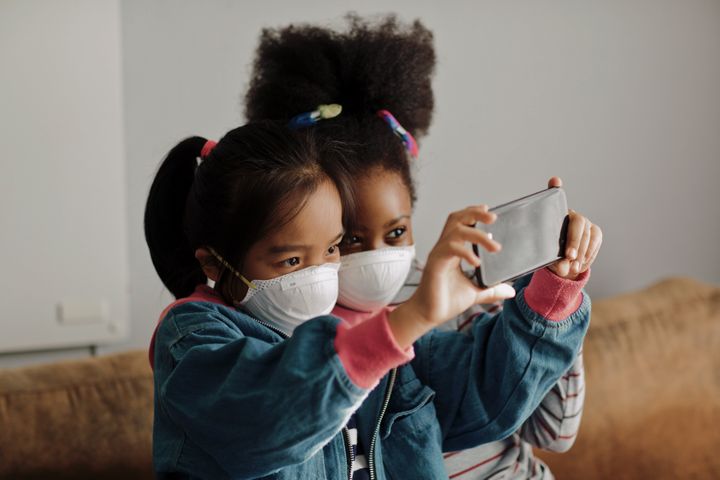News
Want Your Kids To Have Interracial Friendships? Look At Your Friends First
Having quality friendships with people of different races is associated with less biased racial attitudes, better social skills, increased empathy and decreased anxiety in racially mixed settings. Yet despite the many benefits, cross-racial friendships are still relatively uncommon.
“America is both anti-racist in its aspiration and racist in its current reality,” psychologist Deborah Plummer — author of “Some of My Friends Are… : The Daunting Challenges and Untapped Benefits of Cross-Racial Friendships” — told HuffPost. “We live in that duality and the more that we can cross racial lines in honest, egalitarian relationships, the more we can build the kind of social trust necessary to heal our deep racial divide.”
Younger kids tend to have more friends across racial lines, but those ties often dissolve as they move into adolescence. And parents want to raise anti-racist kids, but they don’t always model the kind of behaviors they wish to see themselves. So what can parents do to help their kids form lasting, meaningful interracial friendships in childhood and beyond? Below, experts offer some actionable advice.
Model cross-racial friendships within your own social circle.
First, take a look at your own friends, particularly the people your child sees you interact with. Who do you invite to the house for dinner or parties? Which families do you go on vacation with?
“Parents who have racially diverse social networks support children to perceive it as natural and commonplace,” Plummer said. On the flip side, if your own friend group consists only of people who look like you, consider the example you’re setting for your child.
In a 2012 study of 84 white moms and their preschool-aged children, researchers found that the mother’s cross-race friendships — not their own racial attitudes — predicted their children’s levels of racial bias, said co-author and University of Texas, Austin professor emeritus Rebecca Bigler.
“Children were less racially biased when their mothers had a higher percentage of cross-race close friendships,” she said. “I speculate that young children who observe their parents engage intimately and affectionately with white but not Black people attempt to explain that behavior and, most often, surmise that their parents do not like Black people, in part, because that is an easier explanation than one involving the historical and contemporary factors involved in U.S. race relations — like systemic racism in the banking and real estate industries.”
“The more that we can cross racial lines in honest, egalitarian relationships, the more we can build the kind of social trust necessary to heal our deep racial divide.”
– Deborah Plummer, psychologist and author
If your own social circle lacks diversity, start working to expand your network. But be mindful about it: You’re looking to develop authentic, mutual friendships — not seeking out certain people solely because of how they might benefit you or your kid.
“I certainly wouldn’t do it with the intention of, ‘I want to ensure that I’m getting my needs met,’” said Riana Elyse Anderson, an assistant professor at the University of Michigan’s School of Public Health, who studies parenting practices to reduce race-related stress in families. “It should just be: What’s great about this person? How can I learn from them? How can I teach them from my perspective, too, what I know? So it should be mutually beneficial, not sucking or trying to pull from the [other] person as a resource. Because that’s a burden for those other parents as well.”
Examine, too, some of the larger decisions you make as a parent, like what neighborhood you choose to live in, what school you choose to send your kids to or what place of worship you belong to, said Amber Williams, assistant professor of psychology at California Polytechnic State University in San Luis Obispo, California. Those places determine who your family interacts with on a regular basis.
You can also meet new people by getting involved in organizations that focus on issues that affect communities of color.
“Start by listening and following the lead of the organizers and pre-existing members,” Williams said. “Through these actions, developing meaningful friendships may take time, but that time will likely help you build trust with people of color who may be wary of people looking for a ‘token Black friend,’ for example.”
Talk openly about race and racism with your kids.
Too often, white parents, in particular, shy away from discussing these subjects with their kids (many parents of color, however, do not have this luxury). They’re worried that acknowledging differences will make their kids prejudiced. But, in fact, research indicates that the opposite is true: By avoiding talking about race, parents are more likely to have children that are racially biased.
When your kids point out differences in skin tone or hair type — like calling a Black person’s hair “poofy” or “weird” — don’t shush them or ignore the remark. That approach treats race as if it’s a taboo subject. Instead, use it as an opportunity to have a dialogue about these differences and what they do and do not mean. Your willingness to have these conversations signals to your kids that they can come to you when they have questions about race, so that the burden doesn’t end up falling on their friends of color down the road.
“You might say, ‘That man is African-American, and his hair is not ‘weird,‘” Bigler previously told HuffPost. “His hair is different than yours, but I think that it is really great! People often — but not always — have hair like others in their family. You have hair like your ____. But people’s hair doesn’t tell you anything about them. Sometimes people with curly hair like to play with cars and sometimes they don’t. Sometimes people with straight hair are friendly and sometimes they are not.’”

It’s important to emphasize that while these outward differences don’t tell us anything about an individual’s personality or character, they do affect the way people are treated and perceived in the world. Explain to your kids that racial disparities in wealth or education (for example, why the people who live in the big houses are white or why there are fewer Black and Latino students in the advanced classes) exist not because one group is inherently smarter, more hardworking or “better” than another, but because of long-standing systemic racism and oppression. If you don’t spell this out, then children are left to draw their own conclusions, which are often prejudiced in nature.
“If white children see that the only people in their world are other white people, for example, they may make assumptions that this is how things ought to be,” Williams said. “Taking it further, if children don’t see people of different races, they may make assumptions — ‘Well those people aren’t supposed to be here’ or ‘We’re not supposed to hang out with them.’ That may lead them to have fewer cross-race friends.”
Having these conversations may require first educating yourself on subjects like unconscious bias, white privilege and the long history of racism toward different groups in this country so that you’re better prepared to discuss them with your kids. Also research positive aspects, like the contributions people of color have made to society, and learn about the cultures and traditions of other racial or ethnic groups so you can celebrate those with your kids, too.
Be aware of what you say — and how you act — around people of other races in front of your kids.
Having conversations explicitly about race with your kids is important. But if your actions — like clutching your purse when you walk past a Black person on the street — and what you say when your kids are in earshot contradicts the anti-racism ideals you preach, they’re going to absorb these harmful messages, too. This could, in turn, impact which kids they choose to befriend.
“White parents have to be aware of what kinds of statements they make about BIPOC individuals when watching the news or how they react when they experience racial differences in social settings,” Plummer said. “For example, a large group of Blacks in a store or restaurant in a predominantly white setting. Children soak in negative remarks and sense fear in their parents. Children then do what we call ‘emotional tagging’ and associate these feelings with those who are not white as they grow up.”
Introduce your kids to books, TV shows and movies with diverse characters and themes.
Pay attention to the media your child consumes. Are there stories written by people of color with protagonists of color at the center? These shows, books and movies not only expose kids to diverse characters, experiences and points of view, but they’re also great jumping off points for conversations about race.
“Children’s media has not typically done the best job of exposing kids to diverse sets of main characters, and often people of color are either absent or not portrayed very positively,” Williams said. “Exposing them to people of different backgrounds through books and movies that portray people of color in positive ways and monitoring what media they are exposed to may help children feel more positively toward those groups and, again, more open to pursuing friendships with them.”

Equally important is to acknowledge when whatever your kid is reading or watching has a lack of diversity.
“If you watch a show together and notice that all the characters are white, talk about race and white privilege,” journalist Melinda Wenner Moyer wrote for the Washington Post. “Why do you think all the kids in this show are white? How do you think black kids who watch this show feel?”
With older children, you can have more in-depth conversations that look at media through a critical lens.
“Help them to challenge what they’re watching,” Williams said. “To recognize negative stereotypes and the sparseness of cross-race friendships — or seeing unequal or problematic cross-race friendships — may help them consider how they are behaving in such friendships in their real lives.”
This story is part of a HuffPost Parents project called “I See Me,” a series for parents and kids on the power of representation. We know how important it is for kids to see people who look like them on the biggest stages, including politics, sports, entertainment and beyond. Throughout February, we’ll explore the importance of representation in teaching kids about difference, acceptance, privilege and standing up for others.
Read more

